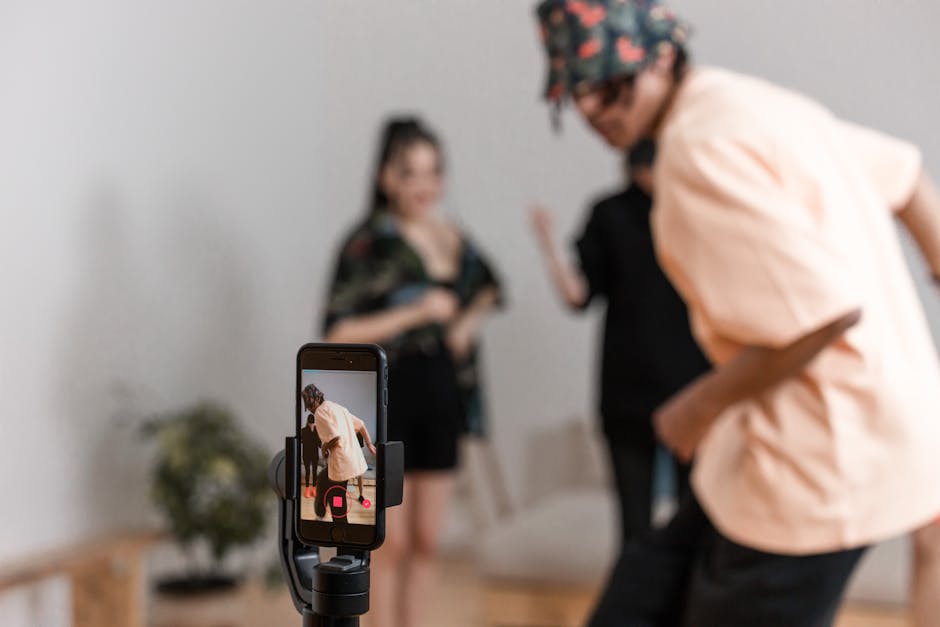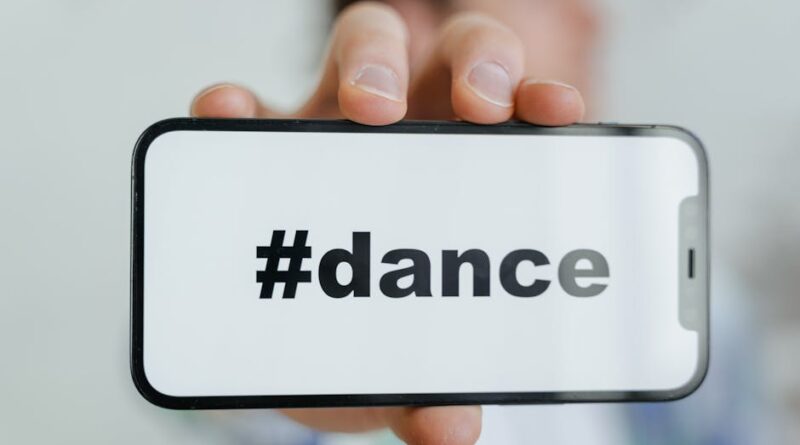The Psychology of Viral Entertainment: Unraveling the Secrets Behind Shareable Content
Have you ever found yourself endlessly scrolling through social media, captivated by a funny video, heartwarming story, or mind-boggling meme? What is it about these pieces of content that make them go viral, spreading like wildfire across the internet? Welcome to the fascinating world of viral entertainment, where psychology plays a key role in creating shareable and engaging content.
In this article, we will delve deep into the psychology of viral entertainment, exploring the mechanisms behind what makes certain videos, articles, or images irresistibly shareable. From the emotional triggers that prompt us to hit the ‘share’ button to the cognitive processes that make us remember and engage with content, we will uncover the secrets behind the viral phenomena that dominate our online landscape.
The Power of Emotions in Viral Content

Emotions are at the heart of viral content. Whether it’s laughter, awe, anger, or sadness, emotions play a crucial role in capturing our attention and driving us to share content with others. A study conducted by the University of Pennsylvania found that high-arousal emotions, such as joy and awe, are more likely to make content go viral. This is because these emotions prompt us to take action, whether it’s sharing a video with a friend or commenting on a thought-provoking article.
One prime example of emotional content going viral is the ALS Ice Bucket Challenge. This social media campaign, which involved participants pouring a bucket of ice water over their heads to raise awareness for ALS, spread like wildfire in the summer of 2014. The campaign tapped into emotions of empathy, solidarity, and challenge, prompting millions of people to participate and share their videos online. The emotional appeal of the challenge contributed to its viral success, raising millions of dollars for ALS research in the process.
The Element of Surprise and Novelty

Another key factor in creating viral content is the element of surprise and novelty. Humans are wired to seek out new and unexpected experiences, and content that offers a fresh perspective or a unique twist is more likely to grab our attention and spark our curiosity. This is why videos of unexpected animal friendships, mind-bending optical illusions, or quirky DIY hacks often go viral, as they offer a break from the mundane and predictable.
One viral sensation that capitalized on the element of surprise is the “What color is this dress?” phenomenon that took the internet by storm in 2015. A seemingly innocuous photo of a dress sparked a heated debate over its color, dividing the internet into two camps: those who saw it as blue and black, and those who saw it as white and gold. The viral nature of the dress can be attributed to its unexpected optical illusion, which captivated people’s attention and fueled discussions across social media platforms.
The Role of Social Identity and Group Dynamics

Humans are social creatures, and our sense of identity and belonging often influences the content we consume and share online. Research has shown that content that aligns with our social identity or group affiliations is more likely to go viral, as it reinforces our sense of belonging and strengthens social bonds. This phenomenon is known as social identity theory, which posits that people categorize themselves into social groups and derive their sense of self from these group memberships.
A prime example of social identity driving viral content is the rise of internet challenges and memes that unite people around a common theme or idea. From the Harlem Shake craze to the Mannequin Challenge, these viral trends encourage participation and engagement, fostering a sense of community among participants. By tapping into shared values, beliefs, or experiences, these challenges create a sense of social identity that motivates people to join in and share their own versions of the trend.
The Power of Storytelling and Narratives

At the heart of many viral content pieces lies a compelling story or narrative that captures our imagination and emotions. Humans are wired to respond to stories, as they help us make sense of the world, connect with others, and evoke empathy and understanding. Content that weaves a narrative arc, evokes strong emotions, and leaves a lasting impression is more likely to resonate with audiences and prompt them to share it with others.
One powerful example of storytelling in viral content is the Dove Real Beauty Campaign, which sought to challenge conventional beauty standards and empower women to embrace their natural beauty. Through a series of videos and advertisements, Dove shared real stories of women overcoming insecurities and embracing their unique qualities, sparking conversations about self-esteem and body positivity. The campaign’s emphasis on storytelling and authenticity resonated with audiences, making it a viral sensation that inspired millions of people around the world.
The Influence of Social Proof and Authority
When it comes to sharing content online, social proof and authority play a significant role in influencing our decisions. Social proof refers to the idea that people look to others to guide their own behavior and choices, especially in ambiguous or uncertain situations. If we see that a video, article, or meme has thousands of likes, shares, or comments, we are more likely to perceive it as valuable and trustworthy, leading us to engage with it and share it with others.
Moreover, the influence of authority figures or influencers can also impact the virality of content. When a celebrity, expert, or influencer shares a piece of content, their endorsement can lend credibility and legitimacy to the message, increasing its reach and impact. This is why influencer marketing has become a powerful tool for brands and creators looking to leverage the social influence of popular figures to promote their content and products.
The Dark Side of Viral Entertainment: Misinformation and Clickbait
While viral content can be entertaining and engaging, it also has a dark side that can perpetuate misinformation, sensationalism, and clickbait. In the age of social media and instant sharing, false information and misleading headlines can spread like wildfire, leading to confusion, polarization, and mistrust among audiences. The psychology behind clickbait lies in our innate curiosity and desire for instant gratification, as clickable headlines and sensationalized content often trigger our impulse to click and share without critically evaluating the information.
An infamous example of misinformation going viral is the spread of fake news and conspiracy theories on social media platforms. From false claims about political figures to health misinformation about vaccines and treatments, the unchecked spread of misinformation can have real-world consequences, impacting public discourse, elections, and public health. It is essential for audiences to critically evaluate the content they consume and share, and for platforms to implement measures to combat the spread of false information.
Common Misconceptions About Viral Content
One common misconception about viral content is that it is purely based on luck or chance. While there is an element of unpredictability in what makes content go viral, there are also key psychological principles and strategies that creators can employ to increase the likelihood of their content being shared. By understanding the emotional triggers, social dynamics, and storytelling elements that drive viral content, creators can craft content that resonates with audiences and prompts them to engage and share.
Another misconception is that viral content needs to be flashy or sensational to attract attention. While eye-catching visuals or provocative headlines can grab initial attention, lasting virality often stems from content that elicits a genuine emotional response, tells a compelling story, or taps into shared values and experiences. By focusing on authenticity, relevance, and emotional resonance, creators can create content that stands the test of time and continues to be shared and discussed long after its initial release.
Conclusion: The Psychology Behind Shareable Content
To wrap things up, the psychology of viral entertainment offers valuable insights into what makes content go viral and capture the hearts and minds of audiences worldwide. By understanding the emotional triggers, social dynamics, storytelling elements, and cognitive processes that drive viral content, creators can craft content that resonates with audiences and prompts them to engage and share. Whether it’s the power of emotions, the element of surprise, the influence of social identity, or the impact of storytelling, the psychology of viral entertainment illuminates the intricate workings of our online behavior and the secrets behind shareable content.
As we navigate the ever-evolving landscape of digital media and social sharing, it is essential to harness the power of psychology to create content that inspires, educates, and entertains audiences in meaningful ways. By tapping into our innate desires for connection, emotion, and novelty, creators can create content that transcends boundaries, sparks conversations, and leaves a lasting impact on our online culture. So, the next time you come across a viral video or meme, take a moment to reflect on the psychology behind its success, and perhaps even create your own piece of shareable content that resonates with others and spreads joy or inspiration in the digital realm.




